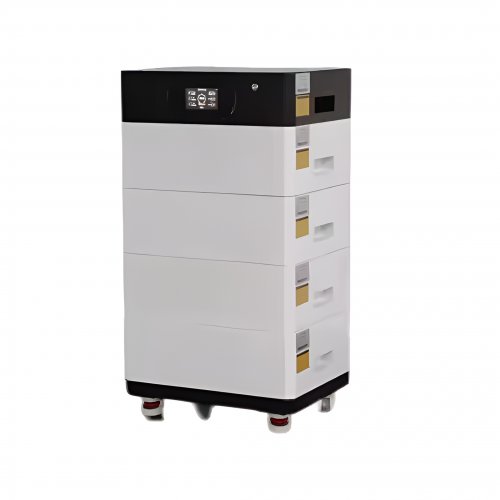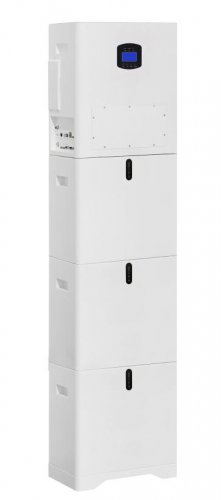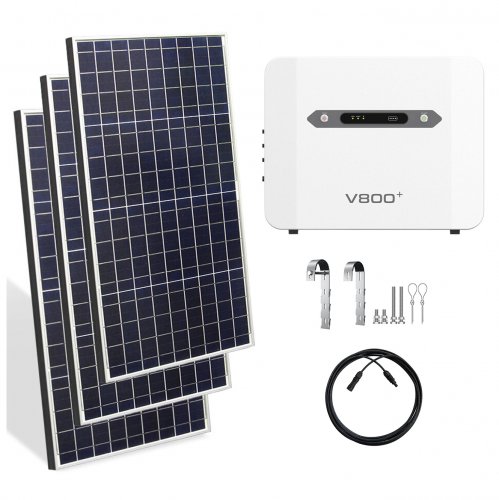Lifepo4 Energy Density Review: Balancing Power, Safety, And Longevity
Lithium Iron Phosphate (LiFePO4) batteries have emerged as a formidable player in the energy storage sector, challenging the dominance of traditional lithium-ion chemistries like NMC (Nickel Manganese Cobalt) and LCO (Lithium Cobalt Oxide). At the heart of this discussion is a critical metric: energy density. This review delves into the functional implications of LiFePO4's unique energy density profile, examining its advantages, limitations, and real-world performance across various applications, from solar power systems to electric vehicles and portable power stations.
Understanding the Core Function: What is Energy Density?
Energy density, measured in Watt-hours per kilogram (Wh/kg) or Watt-hours per liter (Wh/L), defines the amount of energy a battery can store relative to its weight or size. It is the key determinant of how long a device can run or how far a vehicle can travel on a single charge. LiFePO4 batteries typically offer a gravimetric energy density in the range of 90-160 Wh/kg. This is a crucial figure to contextualize. While it is significantly higher than lead-acid batteries (30-50 Wh/kg), it is notably lower than the 150-250 Wh/kg commonly found in high-performance NMC batteries. Therefore, the primary function of a LiFePO4 battery is not to achieve the absolute maximum runtime in the smallest possible form factor, but to deliver a superior blend of safety, cycle life, and stable power within a reasonable and practical physical footprint.
The Advantages: Beyond the Raw Numbers
While the numerical energy density might seem like a drawback on paper, it is more than compensated for by a suite of compelling benefits that define the user experience.Exceptional Cycle Life and Long-Term Value: This is arguably the most significant advantage. LiFePO4 chemistry is incredibly robust, routinely enduring 3,000 to 7,000 full charge-discharge cycles before significant capacity degradation occurs. Compared to NMC's typical 500-1,500 cycles, this translates to a operational lifespan measured in decades, not years. The higher upfront cost is dramatically amortized over time, making it a profoundly cost-effective solution.Unmatched Thermal and Chemical Stability: The strong phosphate-oxide bonds make LiFePO4 batteries highly resistant to thermal runaway. They are far less prone to overheating, catching fire, or exploding under extreme conditions, such as overcharging, short-circuiting, or physical damage. This inherent safety reduces the need for complex and expensive battery management systems (BMS) for prevention, allowing more focus on performance optimization.Consistent Power Delivery: Unlike some chemistries that see voltage sag under load, LiFePO4 batteries maintain a remarkably stable voltage throughout most of their discharge cycle. This means devices and motors receive consistent power until the battery is nearly depleted, enhancing performance and efficiency.Environmental and Practical Benefits: The chemistry is non-toxic and contains no rare or conflict minerals like cobalt, making it more environmentally friendly. Furthermore, it can be stored at a partial state of charge without significant degradation and performs well across a wide temperature range.
The Disadvantages: The Trade-Offs
The choice of LiFePO4 inevitably involves accepting certain compromises.Lower Volumetric and Gravimetric Energy Density: As stated, for a given weight or size, a LiFePO4 battery will store less energy than a top-tier NMC battery. This is its most prominent limitation. For applications where minimizing size and weight is the absolute paramount concern—such as in high-performance electric sports cars or ultra-slim laptops—NMC remains the preferred choice.Higher Initial Cost: The manufacturing process and materials, while free of cobalt, still result in a higher per-unit cost compared to lead-acid and a comparable or slightly higher cost than some NMC batteries. The value is realized over the long term, but the initial investment can be a barrier.Lower Nominal Voltage: With a nominal voltage of 3.2V per cell (compared to 3.6V/3.7V for NMC/LCO), achieving a standard 12V or 48V system requires more cells in series, which can slightly complicate pack design.
Real-World Usage Experience
In practice, the theoretical trade-offs manifest in specific, tangible ways. A user with a LiFePO4-based solar generator, like those from brands such as Bluetti or HomSolar, will notice that the unit might be slightly heavier than a competitor with similar watt-hour rating using NMC chemistry. However, they will benefit from the peace of mind that comes with a vastly safer battery, especially when charging indoors or in a vehicle. They will also appreciate the knowledge that after five years of heavy use, the battery will likely still hold over 80% of its original capacity, whereas an NMC unit might be nearing the end of its useful life.
For an electric vehicle owner, a LiFePO4 battery pack might mean a slightly shorter range per charge compared to a similarly sized NMC pack. Yet, the owner gains a vehicle that is significantly less prone to battery fires and enjoys a battery that will likely outlast the rest of the vehicle's components without needing replacement. The stable voltage also ensures consistent acceleration and performance.
Conclusion
Labeling LiFePO4's energy density as simply "low" is a mischaracterization. It is more accurate to describe it asoptimal for its intended purpose. This chemistry represents a calculated and intelligent engineering trade-off. It sacrifices the absolute peak of energy density to achieve a world-leading combination of safety, longevity, and reliability. It is not the ideal solution for every single application, particularly where space and weight are the non-negotiable constraints. However, for the vast majority of residential, commercial, and recreational applications—including home energy storage, solar power integration, marine use, RVs, and daily-driver EVs—the LiFePO4 battery offers a superior and more sustainable user experience. Its value is not measured in a single charge cycle, but in thousands of safe, dependable cycles over many years of service.
Customized/OEM/ODM Service
HomSolar Supports Lifepo4 battery pack customization/OEM/ODM service, welcome to contact us and tell us your needs.


HomSolar: Your One-stop LiFePO4 Battery Pack & ESS Solution Manufacturer
Our line of LiFePO4 (LFP) batteries offer a solution to demanding applications that require a lighter weight, longer life, and higher capacity battery. Features include advanced battery management systems (BMS), Bluetooth® communication and active intelligent monitoring.

Customised Lithium Iron Phosphate Battery Casing
ABS plastic housing, aluminium housing, stainless steel housing and iron housing are available, and can also be designed and customised according to your needs.

HomSolar Smart BMS
Intelligent Battery Management System for HomSolar Energy Storage System. Bluetooth, temperature sensor, LCD display, CAN interface, UART interface also available.


Terminals & Plugs Can Be Customized
A wide range of terminals and plugs can be customised to suit the application needs of your battery products.

Well-designed Solutions for Energy Storage Systems
We will design the perfect energy storage system solution according to your needs, so that you can easily solve the specific industry applications of battery products.



About Our Battery Cells
Our energy storage system products use brand new grade A LiFePO4 cells with a battery lifespan of more than 4,000 charge/discharge cycles.



Applications in Different Industries
We supply customized & OEM battery pack, assemble cells with wiring, fuse and plastic cover, all the cell wires connected to PCB plug or built BMS.
Applications: E-bike, Electric Scooter, Golf Carts, RV, Electric Wheelchair, Electric Tools, Robot Cleaner, Robot Sweeper, Solar Energy Storage System, Emergency Light, Solar Power Light, Medical Equipment, UPS Backup Power Supply.
We can provide you with customized services. We have the ability to provide a vertical supply chain, from single cells to pack/module and to a complete power solution with BMS, etc.


HomSolar (Shenzhen) Technology Co., Ltd
























